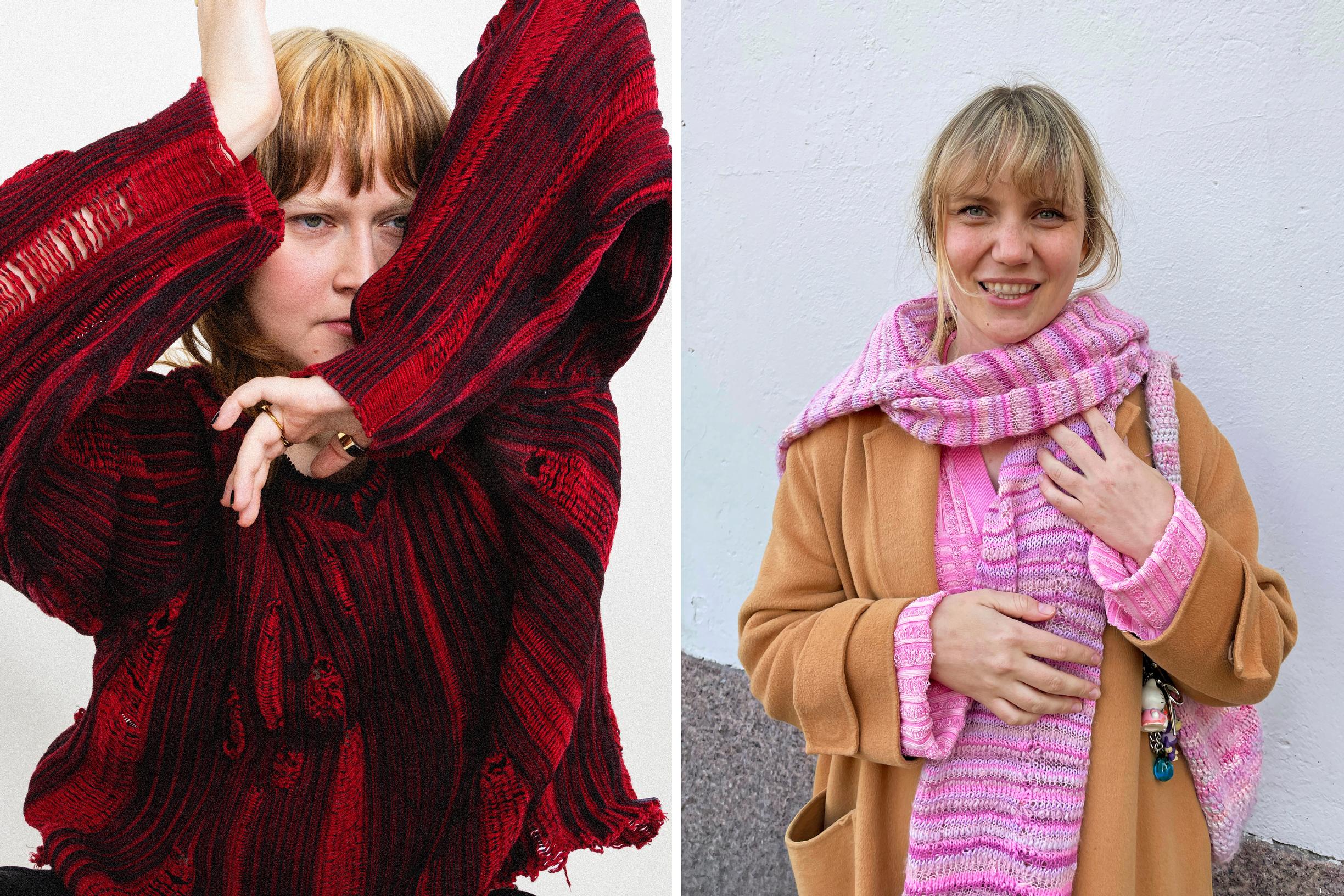
Saimi Parikka revives abandoned knits: “There’s no need to fear unraveling”
Whenever Finnish Saimi Parikka gets her hands on a knit that’s seen better days, she grabs her scissors and seam ripper. Check out Saimi’s instructions for revamping a knit as well!
When Saimi Parikka graduated last winter as a textile designer, her hand-knitted clothing collection was featured in an Aalto University show. While finishing her thesis, she also contributed to a project that transformed abandoned knits into fashion by unraveling them. With this method, you can introduce a relaxed fit and a lace-like texture to a snug ready-made knit, Saimi notes.
What inspired you to revamp old knits?
Last summer, I landed an exciting seasonal job. I joined Chosen for Redesign, a collaboration between the secondhand shop Emmy and Aalto University that aims to promote clothing recycling and the skills it requires. Aalto University is also developing a recycling system for household-discarded textiles, aiming to turn them into new raw materials and products.
A few other master’s students in fashion and textiles and I received unsold yet good-quality garments from Emmy’s inventory, which we refashioned into new items. I focused on cotton knits. We wanted to use the garment’s existing structure and finishing details as much as possible while highlighting slow, handcrafting techniques.
Just a few decades ago, it was normal to know how to fix a garment. These days, people don’t always even know how to reattach a button, let alone patch a piece of clothing. But a patch is simply a sign that the garment is cherished by its wearer. Personally, I want to help promote a strong culture of repair.
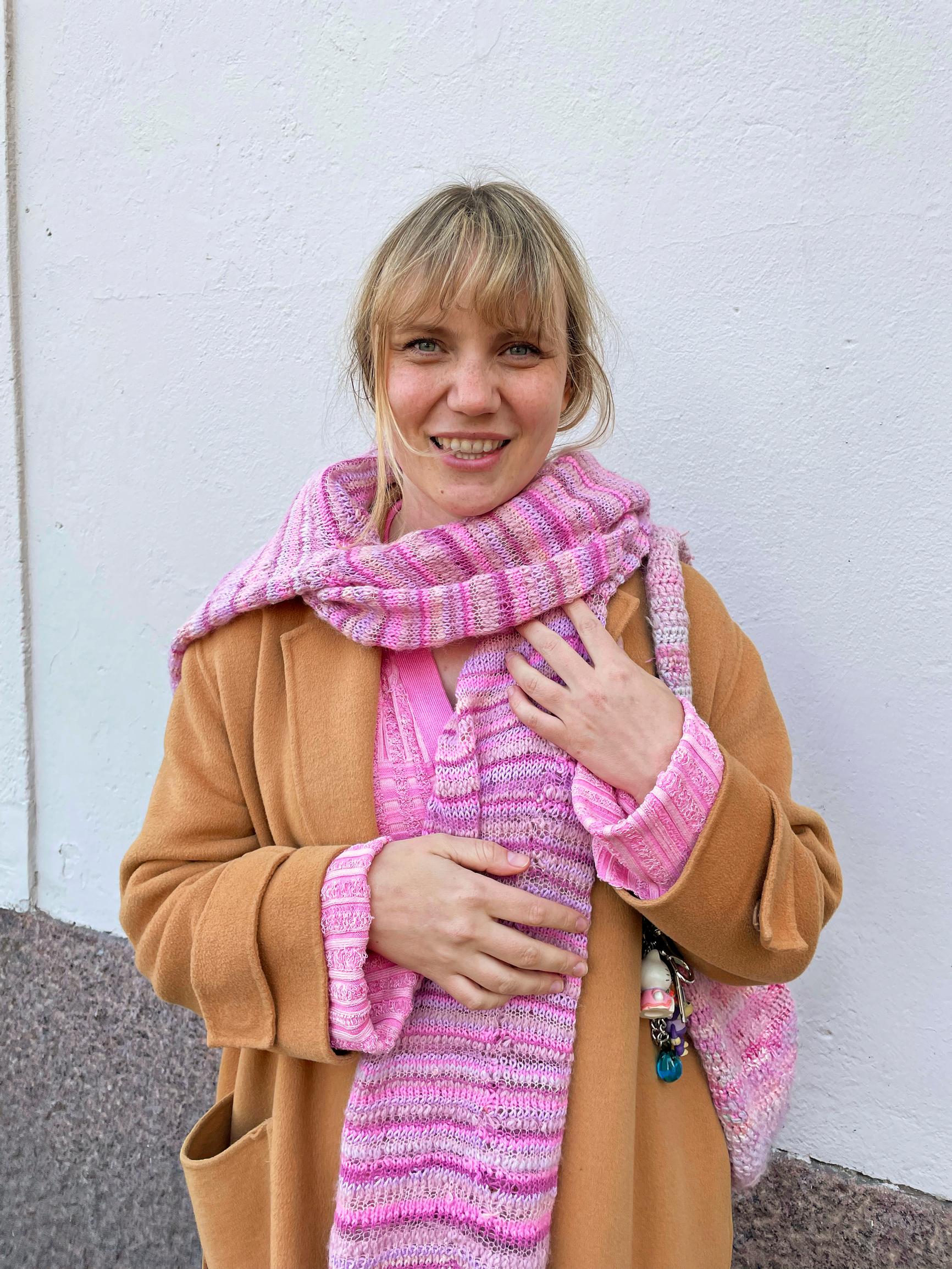
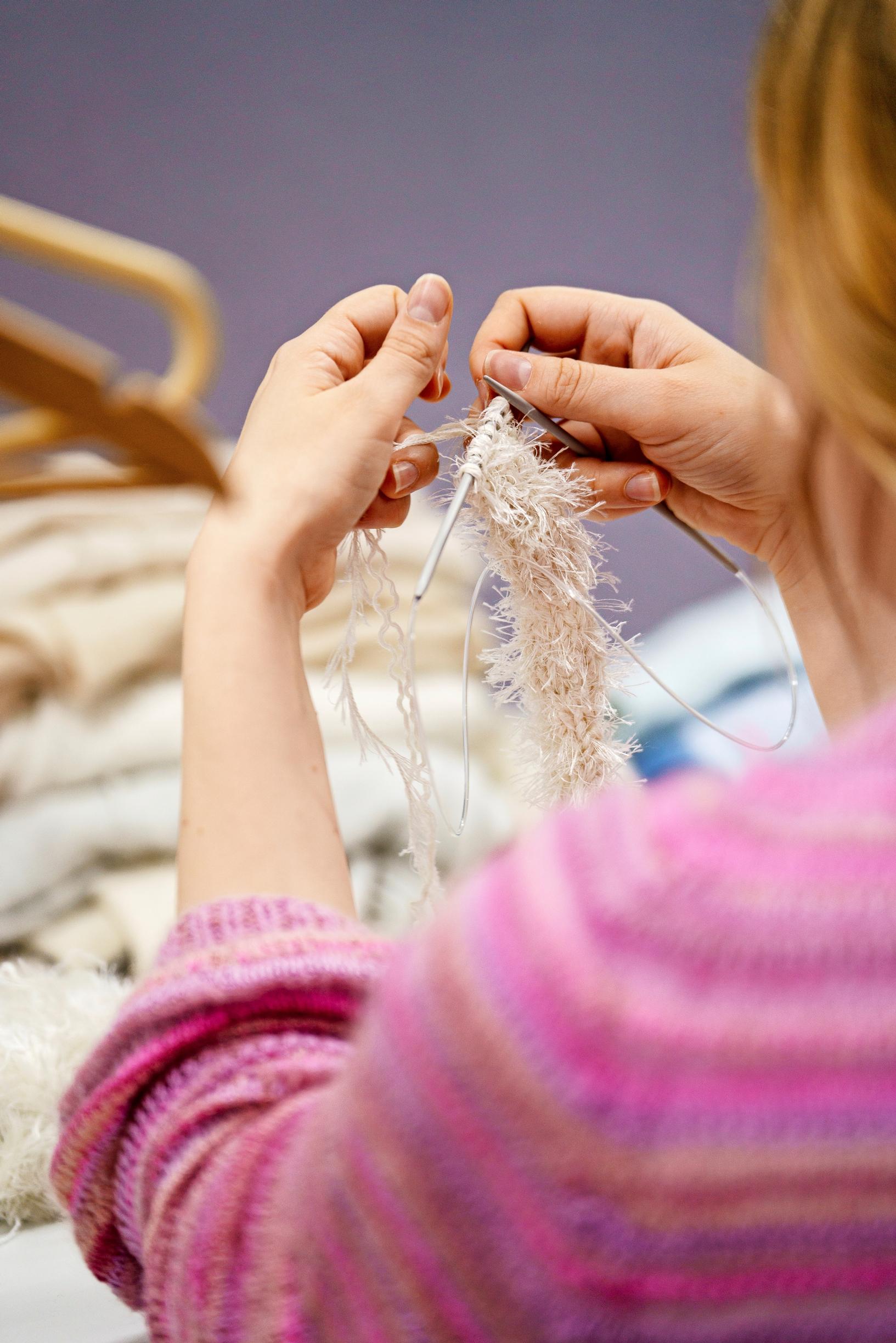
How did you come up with the idea to partially unravel knits?
I tried different ways to create interesting textures in knits. The prettiest outcome came from dropping stitches, resulting in a lacy, slightly sheer, intriguingly messy look. Best of all, the piece grows bigger when some stitches are dropped and the remaining ones loosen. For instance, you can turn a tight-fitting dress into a comfortable fit. An XS can become an L.
With some of the knits, I unraveled them into separate pieces before working on the texture, then reassembled them. Others I kept in one piece, which made the seams a bit tight and gave the garment extra character.
You don’t need to fear unraveling, because industrial knits are fairly sturdy. Cotton doesn’t unravel on its own, but with slippery or smooth yarns and loosely knitted garments, you should be cautious.
Understanding the knit’s structure—how the stitches form—is the trickiest part. This technique is especially well-suited for knitters, as they already know the fundamentals. Then you just pick up a seam ripper or scissors and go for it. You’ll also need a sewing machine for finishing edges and sewing it back together.
Check out Saimi’s modification instructions for a knit here
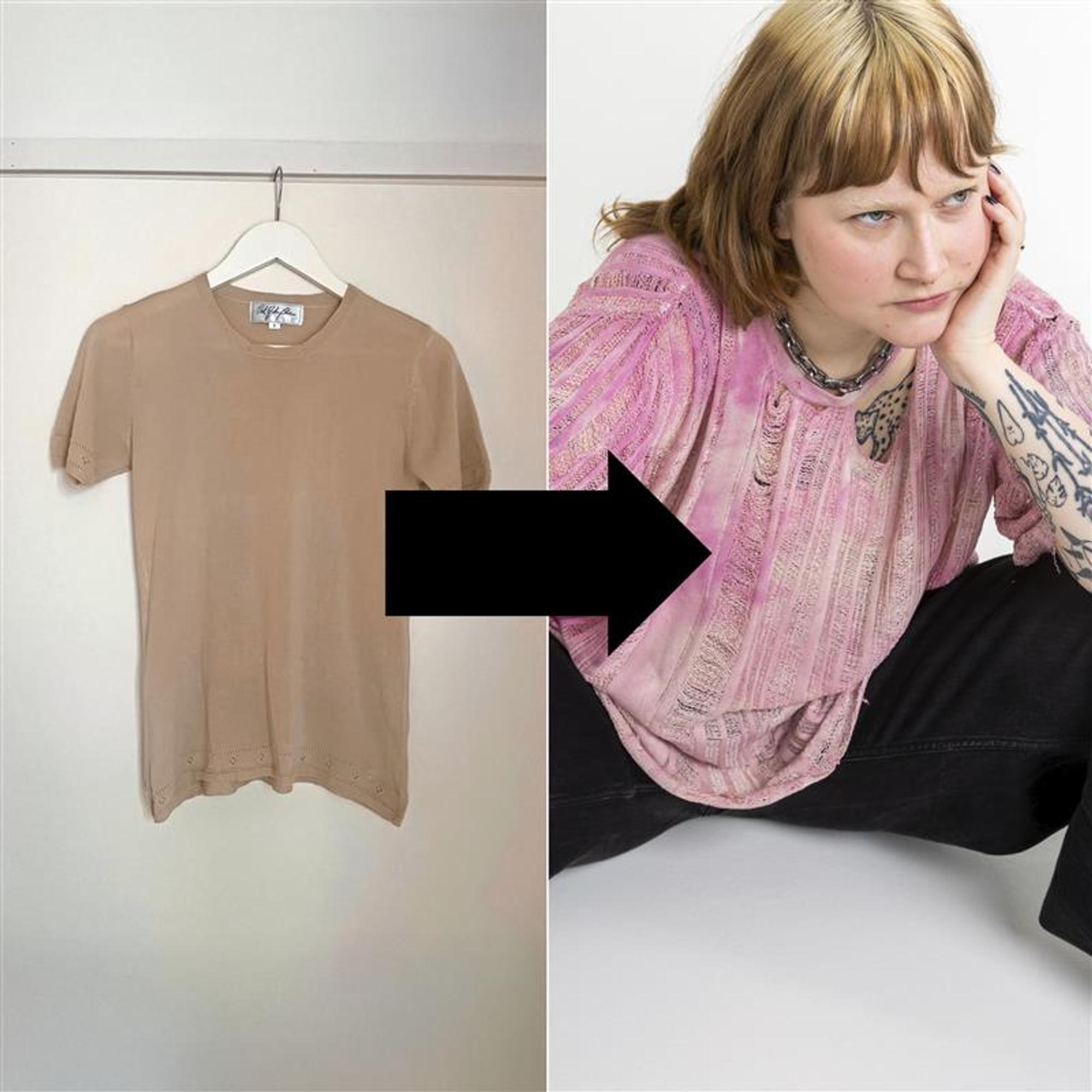
In the instructions published on the Kotona website, Saimi Parikka shows how to unravel the surface of a knit without needing to open the seams. The example used was a discarded lightweight silk knit. See the instructions!
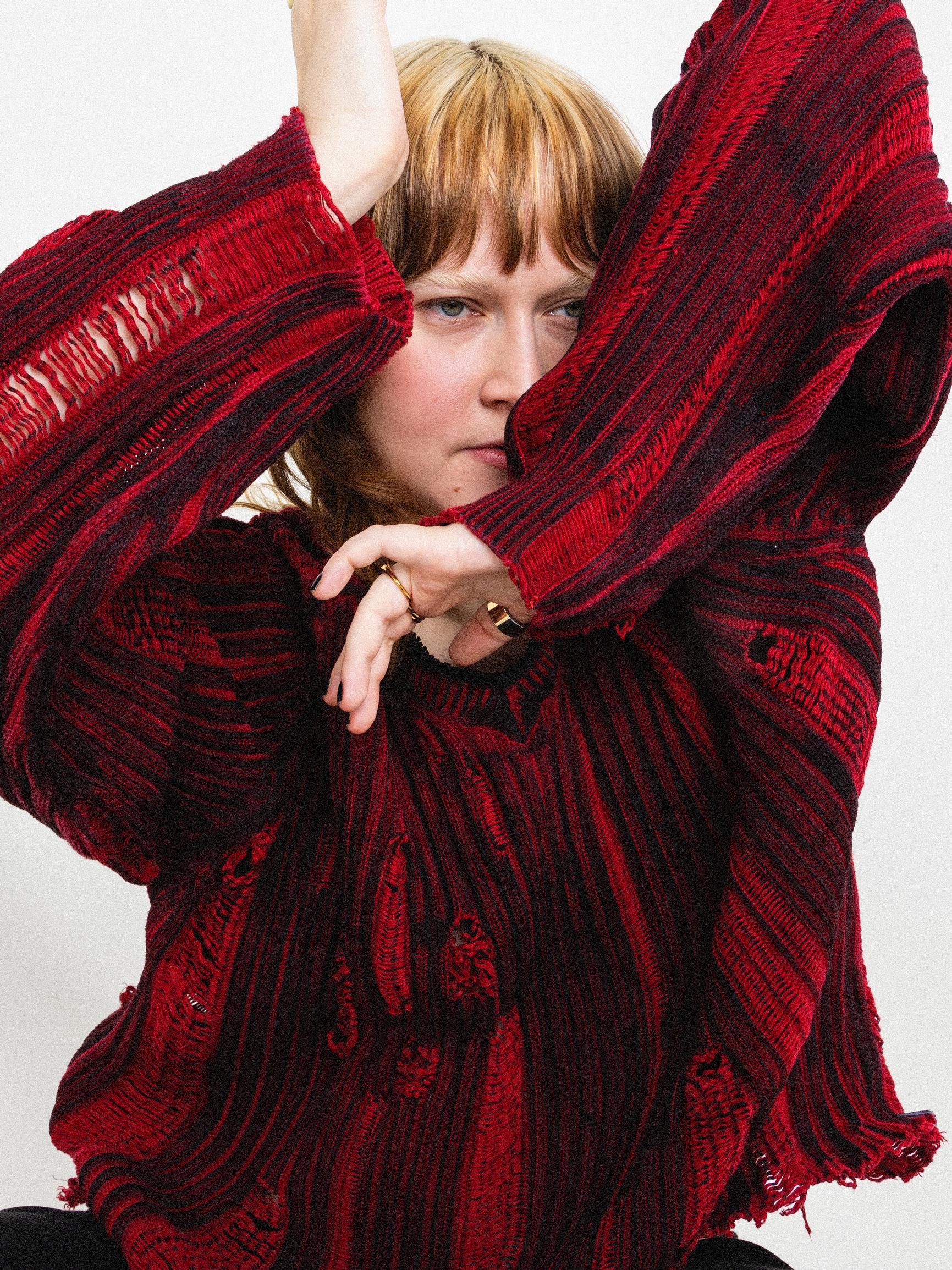
What are some other ways to refresh knits?
Dyeing is an excellent way to update a garment’s color or hide stains. It’s easy to do in a washing machine, but I prefer a pot so I can control how the dye takes.
I’m currently enthusiastic about plant-based dyeing. My friend and I plan to offer a course on natural dyes and ecoprinting. We’ll gather plants, dye fabrics with them, and eventually turn those fabrics into new creations.
Have you always been a crafter?
I’ve been making various crafts since I was very young. In my hometown of Tampere, I attended Taito Organization's craft club when I was in school, where I got to try everything: clay, felting, yarn work, sewing, woodworking, even Tiffany glass.
That drive to experiment remains. My newest interest is birch bark crafts, following in my grandpa’s footsteps. But knits are always my biggest passion.
I’d love to merge the best of both the craft and design worlds. The craft world feels warm, grounding, and communal, but its aesthetics can sometimes be stuck in the past. Meanwhile, the design and fashion world is inspiring and fresh, though it can feel a bit cold and intense.
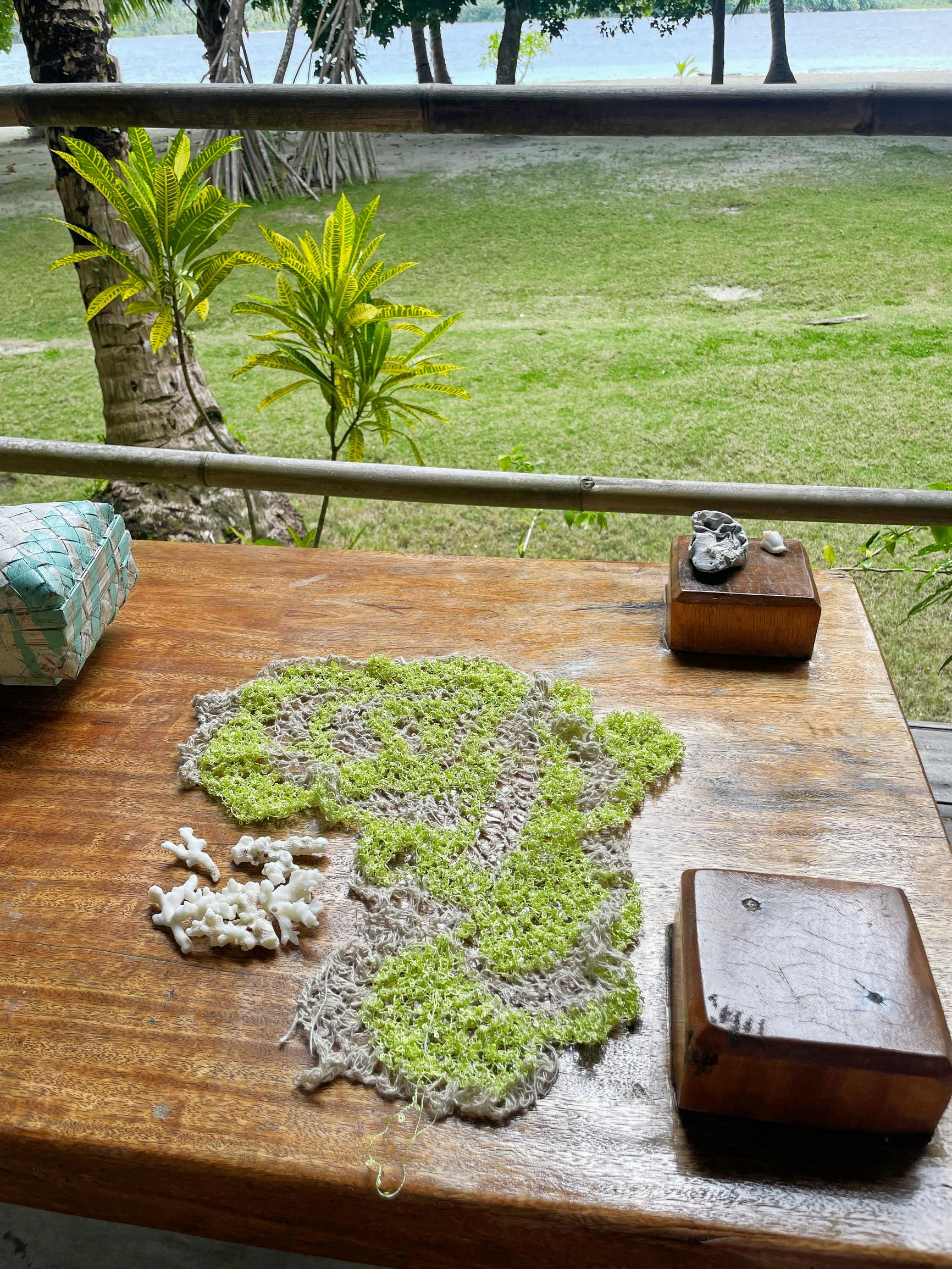
What does knitting give you?
I can’t imagine life without crafts. They bring me a sense of community and help me stay grounded. Unraveling, like knitting, is a repetitive motion that can feel almost meditative once you’ve mastered it. The brain loves predictable movement—it’s the perfect counterbalance to mental tasks, screen work, and a hectic pace of life.
You also design your own knits. What are they like?
In my master’s thesis at Aalto University, I explored what kind of relationship forms with a garment if it’s made entirely or partly by hand. Half of my thesis was theoretical, while the other half was a five-outfit collection I created called Ultra-Slow Fashion. I returned to the basics of handcraft—spinning yarn from wool shorn from my uncle’s sheep and dyeing fabrics with plants I gathered from fields and meadows. Most of the garments are crocheted or knitted by hand.
The collection is currently in my studio. It has appeared in a few exhibitions, and I’ve rented pieces out for different photo shoots.
I have a workspace in the Merihaka neighborhood of Helsinki, which I share with a friend. Having a dedicated space makes it easier to focus and keeps work and free time separate. It would take a lot of discipline to work from home!
I’m currently looking for paid work while also developing my own projects. My ideal is a job with solid values and a great team, where I can apply my hands-on skills and creativity.
Saimi Parikka
Lives in: Kallio neighborhood of Helsinki.
Education: A clothing artisan and milliner from vocational school, a textile designer (UAS) from Metropolia University of Applied Sciences, and a Master of Arts in textile design from Aalto University.
Profession: Hopes to find a paying job in her field while maintaining her clothing upcycling projects on the side.
Passion: Rescuing old garments, especially knits, and giving them a new life.
On social media: @saimielmiina
Interested in customizing clothes? Saimi’s 3 tips
- Materials for modifications are easy to find in recycling centers and thrift stores.
- Your garment should be at least 80 percent high-quality fiber—cotton, silk, linen, or viscose. Working on a poor-quality piece usually isn’t worth it.
- TikTok drives trends in crafts, too. You can find tutorials on different techniques and guides from knitting and upcycling influencers there.


